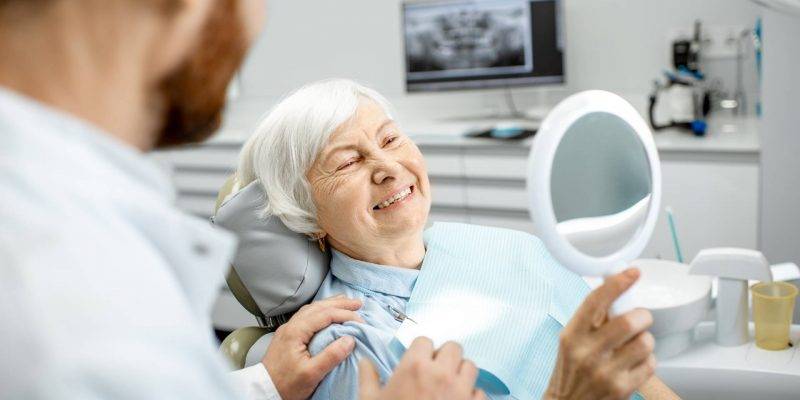When we say teeth cleaning, we’re talking about a professional dental cleaning, not just brushing your teeth at home. Without a professional cleaning, tartar and plaque could build up, discolor your teeth, affect your gums and bone, and lead to decay or tooth loss.
And when you think about the consequences of not taking care of your teeth, visiting the dentist twice a year (recommended) doesn’t sound so bad after all.
A professional teeth cleaning gets all the plaque and tartar off your teeth. But what does a cleaning actually look like?
Depending on the condition of your teeth, the time a cleaning takes can vary. But usually, the whole appointment can last between 30 minutes and an hour.
Here’s the step-by-step process of a dental cleaning.
The dental professional, usually a dental hygienist, will first examine your mouth to get a baseline. Using a small mirror, they will look around your teeth and gums for signs of inflammation, plaque and tartar, or other oral health concerns. If they discover any of these issues, they may double-check with the dentist to make sure they can go ahead with the cleaning.
If they find any plaque and/or tartar, they will remove them with a tool called a scaler. Usually, plaque and tartar congregate near your gum line and between your teeth. It will sound like scraping and that may concern you, but you should know that this is perfectly normal. And the more buildup in your mouth, the more scraping they will have to do.
If this sounds like a dreadful experience, the best thing you can do to minimize the scraping is to brush and floss every day. Doing so removes plaque from your teeth, keeping it from building up and hardening into tartar.
After the hygienist has removed all of the tartar and plaque, they will brush your teeth using an electric toothbrush. This will make a sort of grinding noise against your teeth, but this is also normal. It’s essentially giving your teeth a deep clean. The toothpaste they use will feel gritty because it’s made with particles that help scrub your teeth.
Yes, flossing at home is a great idea. But getting an expert to floss your teeth is the real deal. They are able to get deep between your teeth and get all of the gunk out. Plus, when the hygienist flosses your teeth, it removes any plaque and toothpaste from the previous steps.
You will then rinse out your mouth to get rid of anything left behind. They provide the rinse and it usually has liquid fluoride in it.
The final step is the fluoride treatment, which some but not all dentists will do. This is when the hygienist will ask you what flavor gel you want. Then they’ll place a gel-covered mouthpiece over your teeth and let it sit there for about a minute. This process helps deter cavities for several months afterward.
Instead of using this mouthpiece, some dentist may use a sticky paste that they brush onto your teeth.
When a dentist cleans your teeth, they’ll first scrape off any plaque and tartar, then they’ll brush your teeth, then they’ll give you a fluoride treatment. Every step is very important.
A deep cleaning is slightly different than a typical teeth cleaning. It’s a procedure specifically for people who have gum and periodontal disease, and may require visits every few months.
It’s similar to a basic cleaning in that it involves scaling, but the hygienist will also do root planing. That’s when they will remove plaque and tartar from the roots of your teeth. Getting a deep clean may require at least two visits to the dentist.
The idea is to get all of the bacteria removed from the pockets of your teeth, allowing the gums to heal and stay healthy.
A deep cleaning is only for those with a gum or periodontal disease and is much more thorough and involved.

